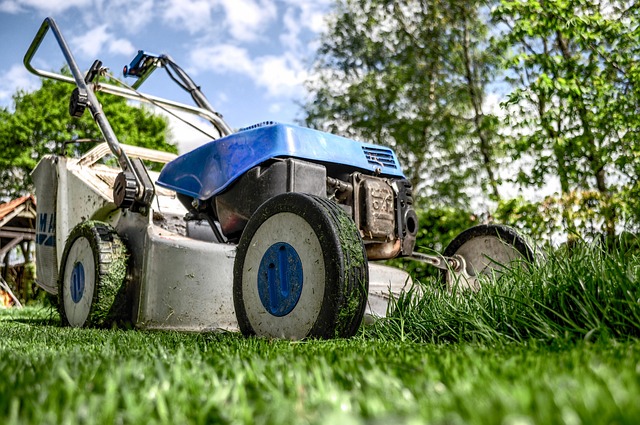Pest and Disease Monitoring Protocols for Urban Green Spaces
Effective pest and disease monitoring in urban green spaces relies on consistent inspections, clear scheduling, and integrated horticulture practices. This article outlines practical protocols for turf, shrubs, and landscape beds—covering irrigation checks, drainage assessment, pruning impacts, mowing routines, mulching, fertilization practices, equipment use, and safety considerations to support sustainable maintenance.

Pest and Disease Monitoring Protocols for Urban Green Spaces
Effective urban green-space management depends on a proactive monitoring protocol that integrates horticulture principles, scheduled inspections, and practical ground maintenance tasks. Combining turf care, irrigation checks, pruning and mowing regimes, and targeted pest surveillance supports healthier landscapes while reducing reactive interventions. The following sections outline structured approaches for inspections, scheduling, and recording results so maintenance teams and local services can prioritize sustainable, safe responses to disease and pest pressures.
How are inspections scheduled for turf and landscaping?
Routine inspections should be calendar-driven but flexible to seasonal pressure. Establish weekly visual checks during peak growing seasons and biweekly visits in cooler months, with additional checks after extreme weather. Inspections for turf focus on color, density, and patchiness; for landscaped beds, look for wilting, leaf spots, and discoloration. Log findings in a centralized schedule so teams can correlate symptoms with fertilization, mowing, or irrigation events and adjust work orders accordingly.
What irrigation and drainage checks are essential?
Irrigation audits detect overwatering or under-watering patterns that influence disease prevalence. Verify emitter output, timing of irrigation cycles, and head-to-head coverage to avoid dry spots or persistent saturation. Inspect drainage features for pooling, clogged outlets, and compacted soils that impede runoff. Correcting drainage and tuning irrigation scheduling reduces root diseases, minimizes pest-favorable conditions, and conserves water—supporting both turf health and broader sustainability goals.
How do mowing, pruning, and mulching affect pest control?
Mowing and pruning influence plant vigor and microclimates. Maintain appropriate mowing heights for turf species to limit stress; improper heights can invite pests and disease. Pruning should remove dead or diseased material while preserving canopy structure to allow airflow and light penetration. Mulching provides soil moisture retention and weed suppression but should be applied correctly—avoid piling mulch against stems, which can create habitat for pests and pathogens. Routine inspections after these activities reveal whether practices are reducing or inadvertently encouraging issues.
What fertilization and sustainability practices reduce disease?
Balanced fertilization supports plant resilience without promoting excessive, tender growth that attracts pests. Use soil tests to inform nutrient plans and prefer slow-release products when appropriate. Integrate sustainable practices such as compost amendments, organic mulches, and targeted applications rather than blanket chemical use. These approaches enhance soil health and beneficial microbial activity, lowering susceptibility to some pathogens and aligning maintenance with long-term ecological aims for urban landscapes.
What equipment and safety protocols support monitoring?
Standardizing equipment and safety protocols improves inspection quality and worker protection. Calibrate sprayers and irrigation testing tools regularly; maintain sharp, clean pruning tools to prevent pathogen transfer. Ensure all crew members use appropriate personal protective equipment during pesticide applications and when handling diseased material. Training on safe equipment operation, routine sanitation of tools between areas, and proper storage reduces cross-contamination and supports consistent monitoring outcomes.
How are pests identified and reported during monitoring?
Accurate pest identification relies on observation, sampling, and documentation. Photograph symptoms from multiple angles, collect small samples when necessary, and note environmental conditions such as recent irrigation, drainage issues, and nearby stressed plants. Record findings in a standardized reporting form used by local services or contractors in your area so diagnoses can be reviewed by specialists if required. Prioritize integrated responses that combine cultural adjustments, targeted treatments, and follow-up inspections to confirm efficacy.
Conclusion
Effective pest and disease monitoring for urban green spaces ties together inspections, scheduling, irrigation and drainage management, horticultural practices, and equipment protocols. By documenting observations and adapting maintenance—through mowing and pruning practices, judicious fertilization, proper mulching, and safety-conscious operations—maintenance teams and local services can maintain healthier turf and landscapes while advancing sustainability. Ongoing monitoring and recorded trends enable informed, measured responses rather than reactive ones, helping urban green spaces remain resilient and functional.





